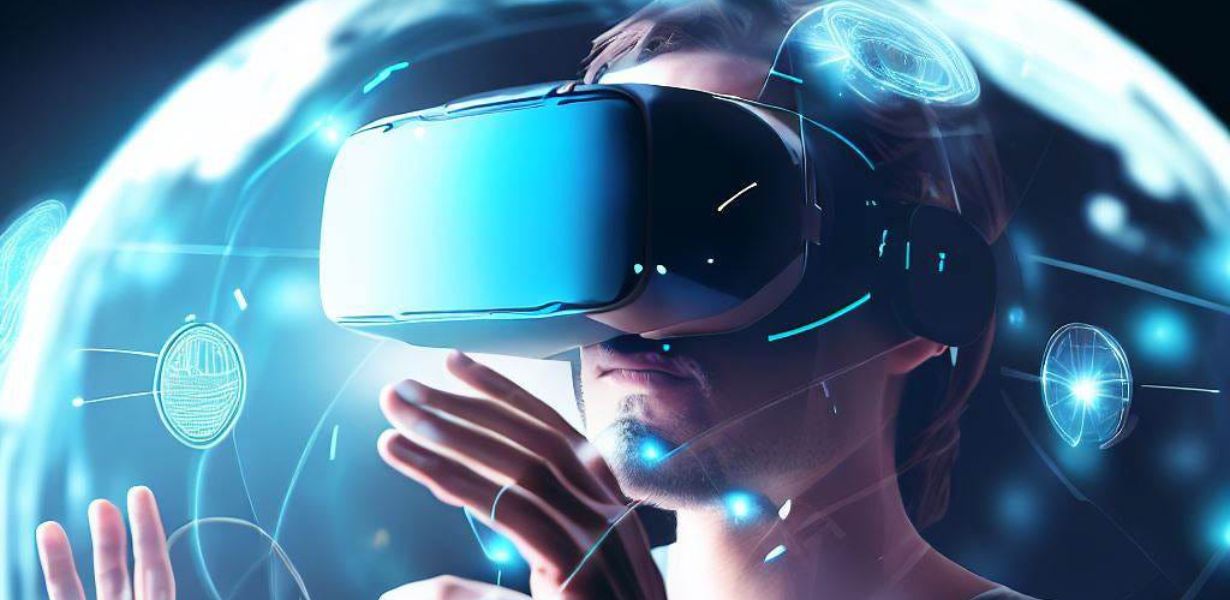
Augmented Reality in UI Design: Bridging Realities for Immersive Experiences
- Post
- August 7, 2023
- UI Design, UI/UX Design, Web Design
- 0 Comments
Welcome to a deep dive into the captivating realm of Augmented Reality (AR) in User Interface (UI) Design. In a world where technological advancements have propelled us into new dimensions, the synergy of AR and UI design emerges as a fascinating avenue, promising to revolutionize how we interact with digital interfaces. In this comprehensive article, we unravel the intriguing fusion of the virtual and real worlds, explore the tools that empower UI designers, and address common questions surrounding this dynamic field.
Augmented Reality in UI Design
Augmented Reality (AR) is not merely a futuristic concept; it’s a transformative force altering the landscape of UI design. Blending computer-generated elements with real-world environments, AR enriches user experiences by superimposing digital information onto the physical world. From enhancing e-commerce platforms with virtual try-ons to guiding users through navigation apps, AR takes interactions beyond the screen.
The Intersection of Technology and Design
The marriage of technology and design is pivotal in creating effective AR UIs. It requires a delicate balance between seamless integration and creative ingenuity. Designers must navigate challenges like maintaining visual consistency and ensuring intuitive interactions. Utilizing cutting-edge tools such as Adobe Aero and SketchAR empowers designers to craft captivating AR interfaces.
Challenges and Solutions in AR UI Design
While AR UI design presents boundless opportunities, it also comes with challenges. Ensuring compatibility across devices, addressing user privacy concerns, and optimizing for various real-world environments can be intricate tasks. To mitigate these challenges, adopting responsive design principles, leveraging machine learning algorithms, and conducting rigorous testing become imperative.
AR UI Design Best Practices
Creating compelling AR UIs demands adherence to certain best practices. Ensuring a clear hierarchy of information, employing a consistent visual language, and prioritizing user context contribute to a seamless user experience. Moreover, judiciously implementing interactive elements and minimizing distractions play a pivotal role in enhancing usability.
Empowering UI Designers: Tools and Templates
In this era of technological empowerment, UI designers have an array of tools and templates at their disposal. From Unity’s AR Foundation for immersive content creation to Framer’s ARKit for seamless prototyping, these tools accelerate the design process and enable designers to focus on unleashing their creativity.
The Evolution of User Interaction
The integration of AR in UI design signifies a paradigm shift in user interaction. Traditional screen-based interactions evolve into immersive experiences that respond to gestures, voice commands, and even eye movements. This evolution reshapes how users engage with digital interfaces, opening doors to entirely new interaction possibilities.
Impacts on Various Industries
AR UI design transcends industry boundaries, leaving an indelible mark across sectors. From healthcare’s surgical simulations to real estate’s virtual property tours, AR reshapes the way businesses connect with their audiences. Embracing AR allows industries to engage customers in innovative ways and enhance their competitive edge.
Ethical Considerations in AR UI Design
As the AR landscape evolves, ethical considerations come to the forefront. Striking the right balance between data privacy, accessibility, and user consent is paramount. Designers must ensure that their creations not only dazzle but also uphold ethical standards that respect user rights and diverse needs.
Final Words
In a world where the digital and physical realms converge, the potential of AR in UI design remains boundless. The fusion of technology and creativity is rewriting the rules of engagement, promising experiences that transcend the limitations of conventional interfaces. The journey is challenging, but the rewards for UI designers who embrace this evolution are truly limitless.
Commonly Asked Questions:
Q1: What are the Key Benefits of AR in UI Design?
AR enriches user experiences by overlaying digital elements onto reality. It enhances engagement, boosts interactivity, and creates memorable interactions that extend beyond screens.
Q2: How Can Designers Ensure Cross-Device Compatibility in AR UI?
Designers can adopt responsive design principles and utilize tools like 3D modeling software to create adaptable AR experiences that cater to various devices.
Q3: What Role Does User Context Play in AR UI Design?
User context is pivotal in AR UI design. Understanding the user’s surroundings and intentions helps designers create intuitive interactions that seamlessly blend the virtual and real worlds.
Q4: Which Industries Can Benefit Most from AR UI Design?
Virtually any industry can benefit from AR UI design. Retail, healthcare, real estate, education, and entertainment are just a few sectors that can leverage AR for innovative customer engagement.
Q5: How Can Ethical Concerns in AR UI Design be Addressed?
Ethical concerns in AR UI design can be addressed by prioritizing user privacy, ensuring transparent data usage, and designing for accessibility to cater to diverse user needs.



